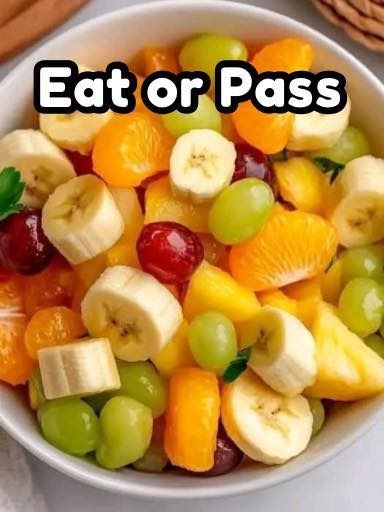ADVERTISEMENT
## Selecting the Best Fruits
### Seasonal Choices
When it comes to making a fruit salad, the quality of your ingredients is paramount. Opting for seasonal fruits not only ensures peak flavor but also provides the best nutritional benefits. For instance, in the summer, you might choose berries, peaches, and watermelon, while winter offers an abundance of citrus fruits and pomegranates. Seasonal fruits are typically more affordable and reduce the carbon footprint associated with out-of-season imports.
### Balancing Flavors and Textures
A successful fruit salad balances sweet and tart flavors while incorporating a variety of textures. Combining juicy fruits like oranges or pineapples with crunchier options such as apples or pears adds complexity to your dish. Consider the sweetness level; pairing naturally sweet fruits like bananas with tangy options like kiwi can create a delightful contrast.
## Preparing Your Ingredients
### Washing and Cutting
Before diving into your salad creation, thoroughly wash all fruits to remove any pesticides or residues. Use a gentle brush for fruits with tougher skins, like melons or apples. Once clean, cut the fruits into bite-sized pieces. Uniform sizing not only improves the salad’s appearance but also ensures an even distribution of flavors with each bite.
### Preventing Browning
Some fruits, like apples and bananas, tend to brown quickly after being cut. To maintain the visual appeal of your salad, consider using a splash of lemon or lime juice. The citric acid in these juices helps prevent oxidation, keeping your fruits looking fresh and vibrant.
## Assembling the Salad
### Mixing and Matching
Once your fruits are prepped, it’s time to assemble your salad. Start by adding larger pieces as your base, like melon or pineapple chunks, then layer smaller fruits like berries or grapes. Gently toss the fruits to mix, ensuring an even distribution without bruising delicate ingredients.
### Dressing Your Salad
While fruit salads are delicious on their own, adding a simple dressing can elevate flavors. A classic option is a honey-lime dressing, which combines honey, lime juice, and a touch of mint for added freshness. Alternatively, a splash of vanilla extract mixed with a bit of orange juice can enhance the natural sweetness of the fruits.
## Serving Suggestions
### Presentation Matters
Presentation can make a significant difference in how your fruit salad is perceived. Consider serving your creation in a clear glass bowl to showcase the vibrant colors. For added elegance, garnish with fresh mint leaves or edible flowers. If you’re serving the salad as a dessert, consider pairing it with a scoop of sorbet or a dollop of whipped cream.
### Storing Leftovers
If you have leftovers, store them in an airtight container in the refrigerator. While fruit salad is best enjoyed fresh, it can last for up to two days. To keep it from becoming soggy, drain any excess juice before refrigerating.
## Conclusion
Crafting a fresh fruit salad is a simple yet rewarding culinary endeavor. By choosing seasonal fruits, balancing flavors, and presenting your salad with care, you can create a dish that not only tastes wonderful but also provides a visual feast. Whether served as a refreshing breakfast, a snack, or a light dessert, fruit salad is a versatile addition to any meal. Embrace the joy of experimenting with different fruit combinations and dressings to discover your perfect blend. In the end, the key to a delightful fruit salad lies in the freshness of the ingredients and the love put into its preparation. Enjoy the bounty of nature with every colorful bite!
ADVERTISEMENT


